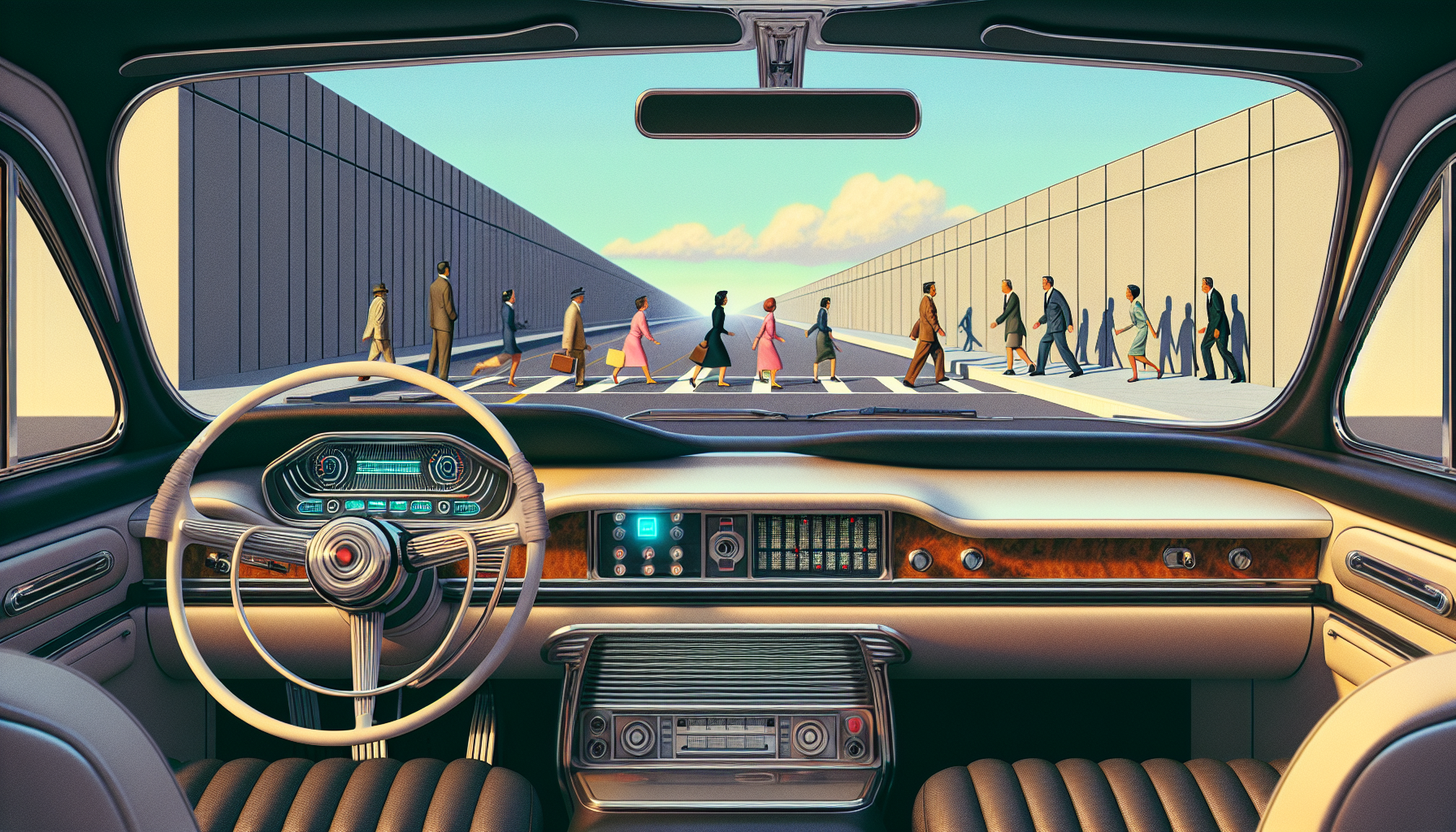Imagine you’re being chauffeured by your brand-new self-driving car. You’re sipping coffee, streaming your favorite playlist, perhaps even contemplating life’s mysteries—or just wondering whether you left the oven on. Suddenly, out of nowhere, a group of pedestrians darts into the road ahead. The car must “decide”: swerve left and risk your life by hitting a wall, or go straight and risk harming the pedestrians. Congratulations: whether you like it or not, you’ve become the protagonist in philosophy’s most famous brain teaser—the Trolley Problem—freshly rebooted for the digital age.
The Classic Trolley Problem: A Brief Detour
For those who haven’t spent their evenings at philosophy clubs, the Trolley Problem is simple but diabolical. A runaway trolley hurtles toward five hapless workers. You stand by a lever. If you pull it, the trolley shifts onto another track, where one lone worker stands. Do you pull the lever, sacrificing one to save five? Or do you do nothing, allowing the trolley to continue on its path?
It’s a compassionate person’s worst nightmare: whichever action you take, or don’t take, someone gets hurt. The scenario has ignited countless debates on morality, responsibility, and the cold mathematics of utilitarian thinking.
From Trolley Tracks to Asphalt: The New Face of the Dilemma
Enter artificial intelligence. No longer confined to philosophy textbooks, the Trolley Problem has hit the road—quite literally—through self-driving cars. These vehicles, powered by intricate algorithms, must be programmed to “choose” what action to take in emergencies: whom to save, whom to put at risk. But unlike philosophers, code doesn’t hesitate.
Developers must transform abstract moral principles into lines of code. Suddenly, every manufacturer of self-driving cars is in the odd position of being an amateur ethicist. Should the car prioritize the safety of its passenger, or of pedestrians? What if the pedestrians are children? Or elderly? Or, dare I say, a parade of ducklings?
From Humans to Algorithms: Who Owns the Choice?
The self-driving car doesn’t choose in any emotional sense—it merely executes what its creators have told it. But this raises troubling questions. When a fatal choice is made, who is responsible? The programmer? The manufacturer? The car owner? Or, more unnervingly, the car itself?
In the old trolley scenario, it’s clear: the person at the lever bears much of the moral weight. With AI behind the wheel, things are much murkier. There’s a chain of responsibility stretching from coder to consumer, with accountability diluted at every link.
Programming Morality: The Technical Challenge
Here’s the rub: computers are relentlessly literal. Tell an algorithm to “minimize harm,” and it will—according to whatever definition of harm it’s been given. But humans don’t agree on those definitions. For example, should the car factor in the age and health of those involved? Should it always obey the law, even if it leads to a worse outcome? What about differing cultural values?
Consider this: in 2016, MIT launched the Moral Machine experiment, asking people worldwide to weigh in on various self-driving car dilemmas. A funny thing happened. Ethical answers varied, sometimes dramatically, depending on where participants lived. In some places, people tended to prioritize the lives of young over old; elsewhere, law-abiding citizens over jaywalkers. Apparently, even life-or-death logic isn’t immune to local flavor.
Can We Avoid Ethical Algorithms Altogether?
One tempting escape route is to sidestep the issue with extra safety features: better sensors, faster braking, stricter obeyance of traffic laws. Go for “zero accidents.” But even this perfect dream can’t dodge the fact that cars—and reality—are unpredictable. If enough cars are on the road, sooner or later, trolley dilemmas will emerge, uninvited as always.
There’s also the practical side: asking customers if they’d buy a car guaranteed to sacrifice its occupant in a pinch is not exactly great marketing. (“Our cars are safe… except when they aren’t. Then we’ll do the math!”)
The Human Factor: Why We Still Matter
If these scenarios make you uncomfortable, good. They should. They reveal something intrinsic about our humanity—our discomfort with playing god, with trying to crunch the infinite variety of lived experience into neat lines of code. Computers are marvels of logic, but they lack the intuition, the hesitation, the heartache that comes with real moral choices.
Humans, for all our faults, wrestle with these dilemmas. Sometimes we make the wrong choice, but it’s ours. When we delegate these choices to machines, we don’t just automate driving—we automate, and obscure, responsibility. The risk is not only that the “wrong” choices are made, but that they are made so quietly, as if the question never needed asking.
So, Where Do We Go from Here?
There’s no tidy fix. The Trolley Problem teaches us that some dilemmas have no perfect answer—only less-wrong ones, or ones that are wrong in different ways. As we march into a world increasingly steered by algorithms, perhaps the greatest challenge isn’t teaching cars to “solve” these problems, but teaching ourselves how to live with the questions they pose.
Maybe the real task for designers and society isn’t to find the “right” answer for every scenario, but to ensure the process is transparent, and that choices—however difficult—are the subject of public debate and reflection.
After all, in the end, most of us would prefer not to be the philosopher at the lever or the passenger in the ethical hot seat. But here we are, like travelers in an automated trolley, moving faster than ever, hoping that wisdom will keep pace with technology—and that maybe, just maybe, the ducklings will make it safely across the road.

Leave a Reply